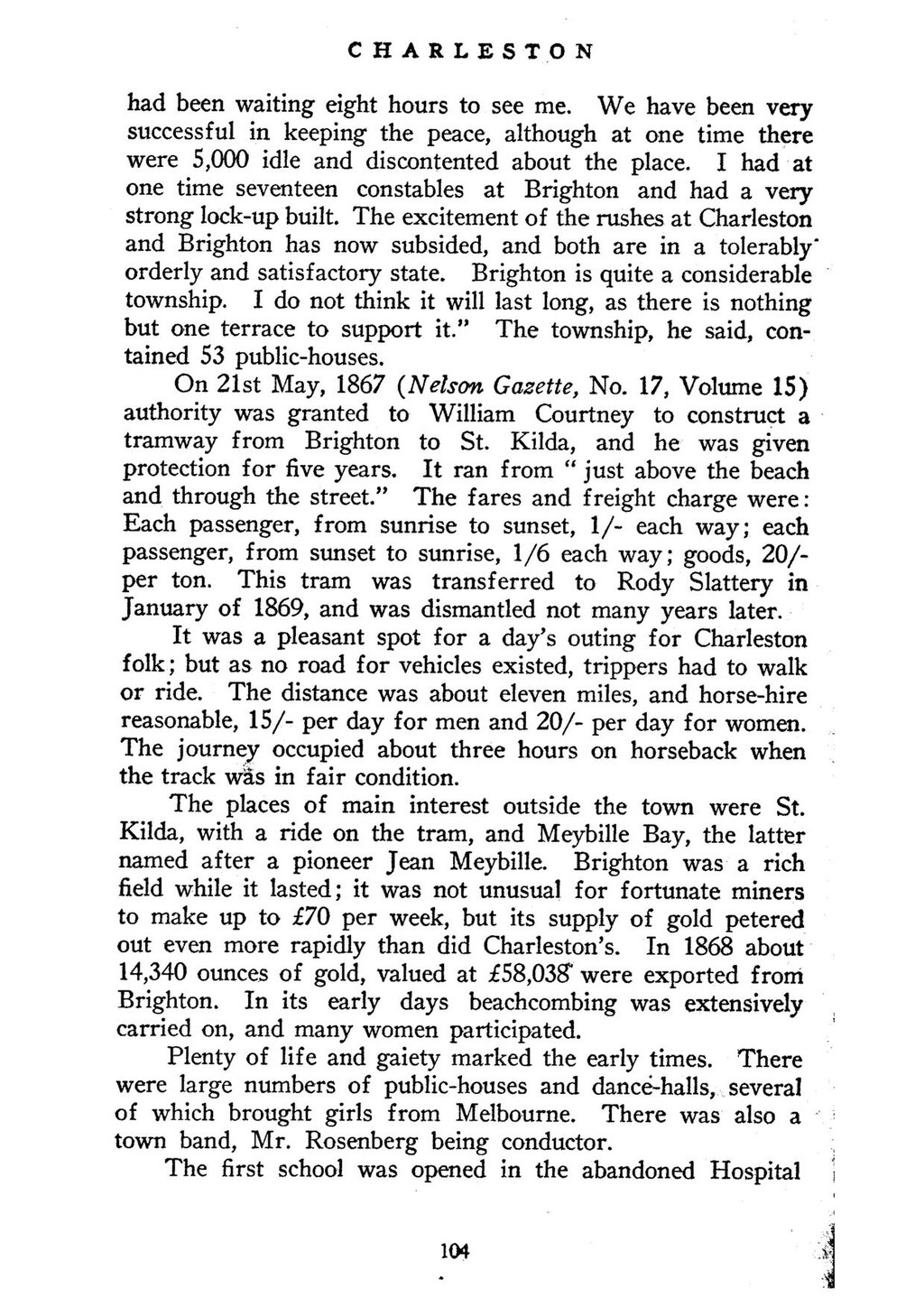CHARLESTON
had been waiting eight hours to see me. We have been very successful in keeping the peace, although at one time there were 5,000 idle and discontented about the place. I had at one time seventeen constables at Brighton and had a very strong lock-up built. The excitement of the rushes at Charleston and Brighton has now subsided, and both are in a tolerably orderly and satisfactory state. Brighton is quite a considerable township. I do not think it will last long, as there is nothing but one terrace to support it.” The township, he said, contained 53 public-houses.
On 21st May, 1867 (Nelson Gazette, No. 17, Volume 15) authority was granted to William Courtney to construct a tramway from Brighton to St. Kilda, and he was given protection for five years. It ran from “just above the beach and through the street.” The fares and freight charge were: Each passenger, from sunrise to sunset, 1/- each way; each passenger, from sunset to sunrise, 1/6 each way; goods, 20/- per ton. This tram was transferred to Rody Slattery in January of 1869, and was dismantled not many years later.
It was a pleasant spot for a day’s outing for Charleston folk; but as no road for vehicles existed, trippers had to walk or ride. The distance was about eleven miles, and horse-hire reasonable, 15/- per day for men and 20/- per day for women. The journey occupied about three hours on horseback when the track was in fair condition.
The places of main interest outside the town were St. Kilda, with a ride on the tram, and Meybille Bay, the latter named after a pioneer Jean Meybille. Brighton was a rich field while it lasted; it was not unusual for fortunate miners to make up to £70 per week, but its supply of gold petered out even more rapidly than did Charleston’s. In 1868 about 14,340 ounces of gold, valued at £58,038 were exported from Brighton. In its early days beachcombing was extensively carried on, and many women participated.
Plenty of life and gaiety marked the early times. There were large numbers of public-houses and dance-halls, several of which brought girls from Melbourne. There was also a town band, Mr. Rosenberg being conductor.
The first school was opened in the abandoned Hospital
104
